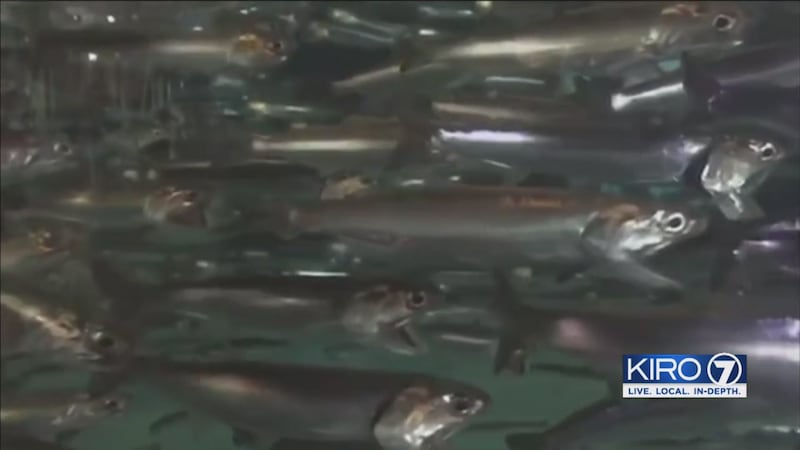Swarms of anchovy can be seen swimming through the South Sound.
The population is booming, even impressing experts, who’ve studied the Salish Sea for years.
“Normally, we see a lot of algae blooms, we report oil sheens, macroalgae and jellyfish. This year in South Sound, we saw a lot of anchovies and, not just a few, I mean, lots of them,” said Christopher Krembs, Washington State Department of Ecology senior oceanographer.
Krembs flies Puget Sound monthly. From above, he spotted dark spots in the water that are giant schools of anchovy.
Scroll down to continue reading
More news from KIRO 7
- Grandmother attacked, robbed in Seattle’s Rainier Beach neighborhood
- 7 Seattle hotels sued for alleged violations of Americans With Disabilities Act
- Investigation underway after 3-vehicle crash in Duvall
- ”Get Weed” billboard leads to boycott threats at car repair shop
- Do you have an investigative story tip? Send us an email at investigate@kiro7.com
They started popping up in 2015 and have been on a surge ever since.
“I’ve been flying 10 years and I’ve seen normally sort of what’s going on there, I have not seen this on that scale,” said Krembs.
Anchovies thrive in warmer water and feed off plankton. They make a good meal for salmon, which helps the southern resident orca population.
“If we have more salmon that’s going to benefit the resident orcas, but, we’ve also seen these anchovy eaten by the California sea lions, and, just back in March, we had a pod of transient orcas that seemed to come into south Puget Sound to take advantage of that resource as well,” said Phillip Dionne, Washington Department of Fish and Wildlife.
Although anchovies are thriving, other forage fish aren’t doing as well.
“Herring, in particular, is the one I think people are very concerned about right now because, while anchovy have increased dramatically recently, we haven’t seen that same trend with herring stocks,” said Dionne. “This [anchovy] prey base is going to be critical to have a healthy stock of forage fish in order to have the recovery goals met for both salmon and orcas.”
Cox Media Group








